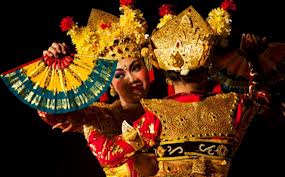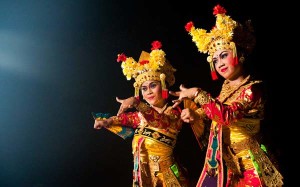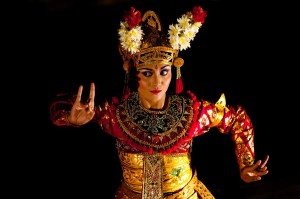Balinese dances are a very ancient dance tradition that is a part of the religious and artistic expression among the Balinese people. Balinese dance is dynamic, angular and intensely expressive. The Balinese dancers express the story of dance-drama through the whole bodily gestures; fingers, hands and body gestures to head and eyes movements.
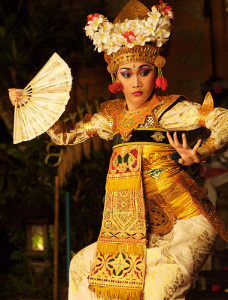
There is a great richness of dance forms and styles in Bali; and particularly notable are those ritualistic dance dramas. Most of dances in Bali are connected to Hindu rituals, certain ceremonies at village temples feature a special performance of a dance-drama. Other Balinese dances are not linked to religious rituals and created for certain purposes, such as “Pendet” the welcoming dance and “Joged” that is social dance for entertainment purpose.
Legong Dance is one of the ancient traditional dances in Bali. Legong probably originated in the 19th century as royal entertainment. Others believe that the Legong originated with the “Sanghyang Dedari”, a ceremony involving voluntary possession of two little girls by beneficent spirits. Legong is also danced at public festivals. Excerpts from Legong dance dramas are put on for entertainment purposes. It is the most feminine dance. It is usually danced by two females before they reach puberty (in fact, they must retire by the time they reach puberty).
Classical Legong enacts several traditional stories. The most common is the tale of the King of Lasem from the Malat, a collection of heroic epic romances. He is at war and deceased by another king, the brother of Princess Ranjasari. The arrogant Lasem wants to marry the princess, but she hates him and tries to run away and get lost in the jungle. King Lasem put her into detention and a great war arose because of his action.
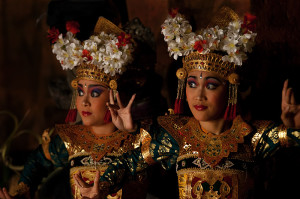
Legong Dance Schedule:
Puri Saren, Ubud: every Mon and Sat, 7:30 PM
Peliatan Village: every Friday, 7:30 PM
Pura Dalem Puri, Ubud: every Saturday, 7:30 PM

